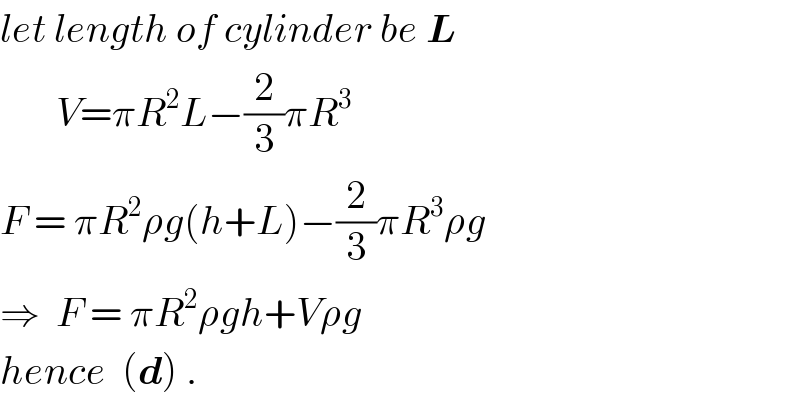
Question and Answers Forum
Previous in Properties of Matter Next in Properties of Matter
Question Number 34411 by Tinkutara last updated on 05/May/18

Commented by Tinkutara last updated on 05/May/18

Commented by ajfour last updated on 06/May/18

Commented by Tinkutara last updated on 06/May/18

Commented by ajfour last updated on 07/May/18

Commented by Tinkutara last updated on 11/May/18
Thank you very much Sir! I got the answer. ��������
